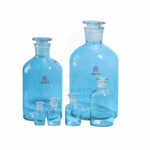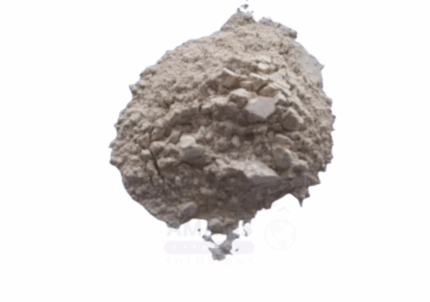Textile Stiffner
Whatsapp Order
Textile Stiffner is a finishing agent formulated to impart stiffness, body, and shape retention to fabrics. It is typically composed of natural or synthetic polymers such as starch derivatives, polyvinyl acetate, acrylic resins, or modified cellulose. Applied during the finishing process, textile stiffeners enhance the handle, drape, and durability of textiles, making them suitable for a wide range of applications from fashion to industrial fabrics.
Description
Table of Contents
Toggle
Textile Stiffner
Primary Uses
- Textile & Garment Industry
- Fabric Finishing: Applied to cotton, polyester, and blended fabrics to improve stiffness and dimensional stability.
- Shirt Collars & Cuffs: Enhances shape retention and crispness in garment parts requiring structure.
- Curtains & Upholstery: Provides body and structure to drapes and furniture coverings for a tailored appearance.
- Interlinings: Used in tailored clothing to stiffen internal layers for better form and appearance.
- Denim & Casual Wear: Helps garments retain their structured look after multiple washes.
- Decorative Textiles: Used in crafts, embroidery backings, and fashion accessories like hats and belts for rigidity.
Secondary Uses
- Automotive Textiles
- Car Interiors: Adds firmness to headliners, door trims, and seat fabrics.
- Medical Textiles
- Bandages and Supports: Imparts stiffness and support to orthopedic wraps or compression garments.
- Home Furnishings
- Table Linens and Decorative Covers: Keeps shapes and folds crisp in tablecloths, runners, and napkins.
- Industrial Textiles
- Technical Fabrics: Provides structure for filtration materials, geotextiles, or reinforcement layers.
KEY PRODUCT FEATURES
1. Basic Identification Attributes
- Chemical Name (Varies): Typically starch derivative, polyvinyl acetate, or acrylic copolymer
- Common/Trade Name: Textile Stiffener
- CAS Number: Varies by formulation
- HS Code: 3809.91.00 (Finishing agents used in textile industry)
- Synonyms: Fabric stiffener, textile hardener, textile finishing agent
2. Physical & Chemical Properties
- Physical State: Liquid (aqueous dispersion) or powder
- Color & Odor: Colorless to pale white; mild or odorless
- Solubility: Soluble or dispersible in water (for most grades)
- pH: 4–8 (depending on composition)
- Viscosity: Varies by formulation (typically 100–500 cps for liquid forms)
3. Safety & Hazard Attributes
- GHS Classification: Not classified as hazardous (for most standard grades)
- Toxicity: Low toxicity; safe for general industrial use
- Exposure Limits: No specific exposure limits; general ventilation and hygiene practices recommended
4. Storage & Handling Attributes
- Storage Conditions: Store in sealed containers in a cool, dry, and well-ventilated place
- Container Type: Plastic drums, IBC totes, or bags (powder form)
- Shelf Life: 12–18 months in unopened containers under proper storage conditions
- Handling Precautions: Avoid contamination and exposure to high heat or freezing
5. Regulatory & Compliance Attributes
- Complies with textile chemical safety regulations under REACH and OSHA
- Free from formaldehyde and APEOs (if specified as eco-grade)
- May meet OEKO-TEX® and ZDHC guidelines for safe textile chemistry (depending on formulation)
- Suitable for use in textiles intended for contact with skin under regulatory limits
6. Environmental & Health Impact
- Biodegradability: Generally biodegradable depending on composition (especially starch or cellulose-based types)
- Ecotoxicity: Low; minimal impact when disposed of properly
- Bioaccumulation: Not expected
SAFETY HANDLING PRECAUTIONS
Safety Handling Precautions
- PPE Required: Gloves and safety goggles recommended for bulk handling
- Handling Guidelines: Avoid splashing; use local exhaust ventilation for large-scale operations
- Storage Measures: Keep sealed and protected from contaminants; avoid freezing (for liquid forms)
First Aid Measures
- Inhalation: Unlikely exposure risk; move to fresh air if discomfort occurs
- Skin Contact: Wash with soap and water; seek medical advice if irritation persists
- Eye Contact: Rinse with plenty of water; consult a physician if irritation continues
- Ingestion: Rinse mouth and drink water; seek medical help if large quantities ingested
Firefighting Measures
- Fire Hazards: Not classified as flammable
- Extinguishing Media: Water spray, foam, dry chemical, or CO₂
- Hazardous Combustion Products: May include carbon oxides depending on organic content
Related products
Acrytan SN
Hylac U94
Hylac is a high-performance, water-based acrylic polymer emulsion widely used as a binding agent and adhesive in coatings, paints, sealants, and construction materials. It offers excellent film formation, adhesion, flexibility, and weather resistance. Hylac U94 is formulated for superior compatibility with a wide range of fillers, pigments, and additives, making it ideal for both industrial and decorative applications. It delivers enhanced durability, water resistance, and color retention, suitable for indoor and outdoor uses.
Hytan RS
Hytan RS is a premium reactive silicone-based release agent engineered for efficient mold release, surface protection, and lubrication across diverse industrial sectors. Its unique formulation ensures the formation of a durable, non-stick, thin silicone film that facilitates easy demolding and improves surface finish quality on metals, plastics, rubber, and composite substrates. Its robust performance enhances production efficiency by reducing cycle times and minimizing defects.


 Preservatives(food)
Preservatives(food) Flavor Enhancers
Flavor Enhancers Acidulants
Acidulants Sweeteners
Sweeteners Antioxidants
Antioxidants Colorants(food)
Colorants(food) Nutraceutical Ingredients (food)
Nutraceutical Ingredients (food) Nutrient Supplements
Nutrient Supplements Emulsifiers
Emulsifiers
 Collectors
Collectors Dust Suppressants
Dust Suppressants Explosives and Blasting Agents
Explosives and Blasting Agents Flocculants and Coagulants
Flocculants and Coagulants Frothers
Frothers Leaching Agents
Leaching Agents pH Modifiers
pH Modifiers Precious Metal Extraction Agents
Precious Metal Extraction Agents
 Antioxidants(plastic)
Antioxidants(plastic) Colorants (Pigments, Dyes)
Colorants (Pigments, Dyes) Fillers and Reinforcements
Fillers and Reinforcements Flame Retardants
Flame Retardants Monomers
Monomers Plasticizers
Plasticizers Polymerization Initiators
Polymerization Initiators Stabilizers (UV, Heat)
Stabilizers (UV, Heat)
 Antifoaming Agents
Antifoaming Agents Chelating Agents
Chelating Agents Coagulants and Flocculants
Coagulants and Flocculants Corrosion Inhibitors
Corrosion Inhibitors Disinfectants and Biocides
Disinfectants and Biocides Oxidizing Agents
Oxidizing Agents pH Adjusters
pH Adjusters Scale Inhibitors( water)
Scale Inhibitors( water)
 Antioxidants(cosmetic)
Antioxidants(cosmetic) Emollients
Emollients Fragrances and Essential Oils
Fragrances and Essential Oils Humectants
Humectants Preservatives
Preservatives Surfactants(cosmetic)
Surfactants(cosmetic) Thickeners
Thickeners UV Filters
UV Filters
 Fertilizers
Fertilizers Soil Conditioners
Soil Conditioners Plant Growth Regulators
Plant Growth Regulators Animal Feed Additives
Animal Feed Additives Biostimulants
Biostimulants Pesticides (Herbicides, Insecticides, Fungicides)
Pesticides (Herbicides, Insecticides, Fungicides)
 Active Pharmaceutical Ingredients (APIs)
Active Pharmaceutical Ingredients (APIs) Excipients
Excipients Solvents(pharmaceutical)
Solvents(pharmaceutical) Antibiotics
Antibiotics Antiseptics and Disinfectants
Antiseptics and Disinfectants Vaccine Adjuvants
Vaccine Adjuvants Nutraceutical Ingredients (pharmaceutical)
Nutraceutical Ingredients (pharmaceutical) Analgesics & Antipyretics
Analgesics & Antipyretics
 Analytical Reagents
Analytical Reagents Solvents(lab)
Solvents(lab) Chromatography Chemicals
Chromatography Chemicals Spectroscopy Reagents
Spectroscopy Reagents microbiology-and-cell-culture-reagents
microbiology-and-cell-culture-reagents Molecular Biology Reagents
Molecular Biology Reagents Biochemical Reagents
Biochemical Reagents Inorganic and Organic Standards
Inorganic and Organic Standards Laboratory Safety Chemicals
Laboratory Safety Chemicals Specialty Laboratory Chemicals(Special Laboratory Equipment)
Specialty Laboratory Chemicals(Special Laboratory Equipment)
 Demulsifiers
Demulsifiers Hydraulic Fracturing Fluids
Hydraulic Fracturing Fluids Scale Inhibitors(oil)
Scale Inhibitors(oil) Surfactants(oil)
Surfactants(oil) Drilling Fluids
Drilling Fluids
 Dyes and Pigments
Dyes and Pigments Bleaching Agents
Bleaching Agents Softening Agents
Softening Agents Finishing Agents
Finishing Agents Antistatic Agents
Antistatic Agents
 Admixtures
Admixtures Waterproofing Agents
Waterproofing Agents Sealants and Adhesives
Sealants and Adhesives Curing Compounds
Curing Compounds Concrete Repair Chemicals
Concrete Repair Chemicals Anti-Corrosion Coatings
Anti-Corrosion Coatings
 Surfactants(cleaning)
Surfactants(cleaning) Builders
Builders Enzymes
Enzymes Solvents (Cleaning)
Solvents (Cleaning) Fragrances
Fragrances
 Electronic Chemicals
Electronic Chemicals Catalysts
Catalysts Lubricants
Lubricants Photographic Chemicals
Photographic Chemicals Refrigerants
Refrigerants Automotive chemicals
Automotive chemicals Pyrotechnic Chemicals
Pyrotechnic Chemicals
 Biodegradable Surfactants
Biodegradable Surfactants Bio-based Solvents
Bio-based Solvents Renewable Polymers
Renewable Polymers Carbon Capture Chemicals
Carbon Capture Chemicals Wastewater Treatment Chemicals
Wastewater Treatment Chemicals
 Pigments
Pigments Solvents(paint)
Solvents(paint) Specialty Coatings
Specialty Coatings Binders/Resins
Binders/Resins Additives
Additives Driers
Driers Anti-Corrosion Agents
Anti-Corrosion Agents Functional Coatings
Functional Coatings Application-Specific Coatings
Application-Specific Coatings
 Fresh Herbs
Fresh Herbs Ground Spices
Ground Spices Whole Spices
Whole Spices Spice Blends
Spice Blends Dried Herbs
Dried Herbs
 Leavening Agents
Leavening Agents Dough Conditioners
Dough Conditioners Flour Treatments
Flour Treatments Fat Replacers
Fat Replacers Decoratives
Decoratives Preservatives(baking)
Preservatives(baking)
 Plasticizers & Softeners
Plasticizers & Softeners Reinforcing Agents
Reinforcing Agents Adhesion Promoters
Adhesion Promoters Vulcanizing Agents
Vulcanizing Agents Antidegradants
Antidegradants Blowing Agents
Blowing Agents Fillers & Extenders
Fillers & Extenders Accelerators & Retarders
Accelerators & Retarders




















